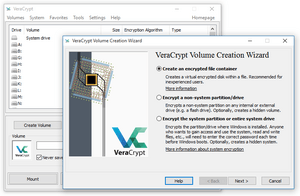Advanced Encryption Standard facts for kids
In cryptography, the Advanced Encryption Standard (AES) is a special way to encrypt data. It uses a symmetric key, which means the same key is used to lock and unlock the information. AES was chosen by the National Institute of Standards and Technology (NIST) in 2001. It is now used all over the world to protect digital information. AES has replaced an older standard called the Data Encryption Standard (DES).
Since 2008, AES has been one of the most popular ways to encrypt data using symmetric keys. Many computer programs and software packages use it. This makes it easy for people and programmers to use.
How AES Was Chosen
AES is based on a type of encryption called the Rijndael block cipher. Two programmers from Belgium, Vincent Rijmen and Joan Daemen, created it.
The NIST Competition
The National Institute of Standards and Technology (NIST) wanted a new, strong encryption method that everyone could use. So, they started a competition in 1997. They asked people to submit their best encryption ideas.
In 1998, fifteen different encryption methods were chosen for the first round. After getting feedback from experts, NIST held a second conference. They narrowed down the choices to five top algorithms: MARS, RC6, Rijndael, Serpent, and Twofish.
By the year 2000, after a third conference, NIST picked Rijndael as the winner. For AES, NIST chose three versions of Rijndael. Each version works with data in blocks of 128 bits. However, they can use different key sizes: 128, 192, or 256 bits. A longer key generally means stronger encryption.
The Advanced Encryption Standard (AES) became an official standard on November 26, 2001.
How AES Works
AES works by taking data in fixed-size chunks, called blocks, which are always 128 bits long. It then uses a secret key to scramble this data. The key can be 128, 192, or 256 bits long. The longer the key, the harder it is for someone without the key to guess the encrypted information.
AES is very fast. It works well on both computer programs and computer parts. It is also fairly easy to set up and does not need a lot of computer memory. This makes it a great choice for many different devices and systems.
Related pages
- DES-X
- Data Encryption Standard (DES)
- Triple DES (TDES)
See also
 In Spanish: Advanced Encryption Standard para niños
In Spanish: Advanced Encryption Standard para niños


